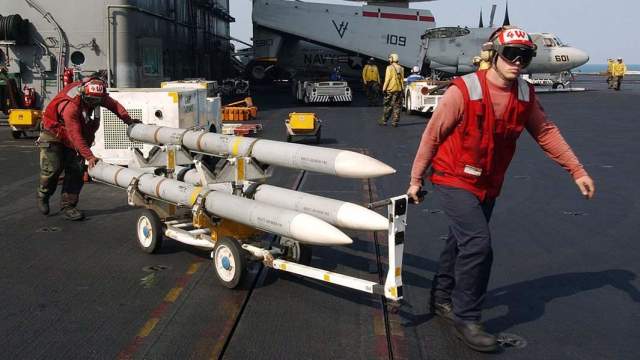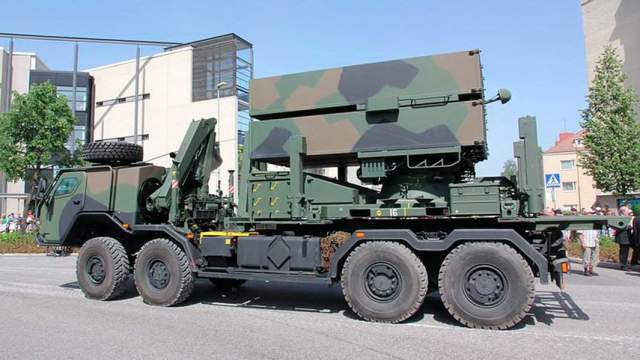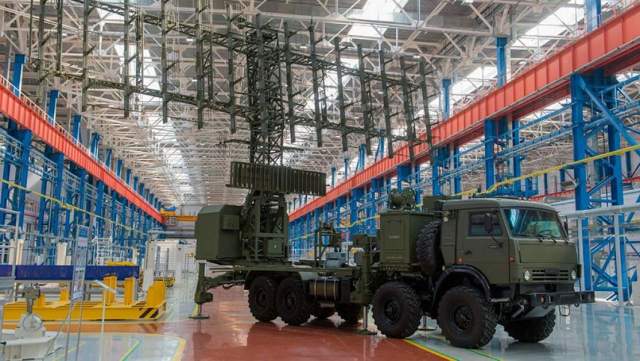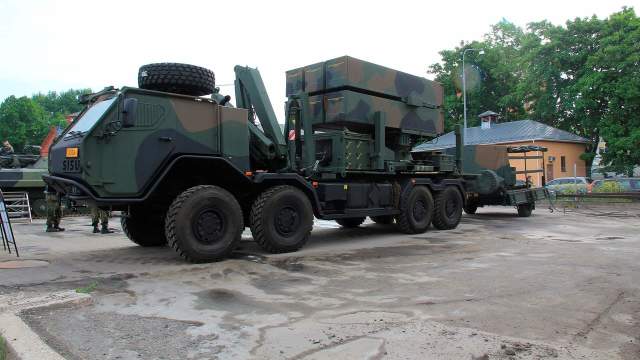What are the NASAMS complexes that cover Washington At the end of August, the Pentagon announced that six NASAMS mobile anti-aircraft missile systems and other weapons will be delivered to Ukraine in the coming months in a package of military assistance.
Prior to that, the talks about the possible transfer of Norwegian-American air defense systems were only hypothetical. However, now the Russian Aerospace Forces will have to face these air defense systems. Izvestia was looking into whether these supplies could change the situation for Kiev, what capabilities NASAMS has and what methods there are to combat them.
The Norwegian complexThe unusual situation is that the United States is supplying Ukraine with an anti-aircraft missile system that was created in Norway.
NASAMS stands literally for "Norwegian advanced ground–to-air complex". Today it is a joint product of companies from Norway and the USA.
Its creation dates back to the 1990s, when it became necessary to develop a new and relatively inexpensive complex to replace the obsolete, but relatively massive Hawk air defense system, which was in service, including the Norwegian army. The difference from other SAMs was that the surface–to–air complex decided to teach how to shoot air-to-air missiles. This made it possible to use ready-made and sufficiently advanced AMRAAM air combat missiles to hit air targets from the ground.
Indeed, in the 1980s and 1990s, the AIM-120 AMRAAM was one of the most advanced medium-range air–to-air missiles created in the United States in the 1980s for dueling with fourth-generation Soviet aircraft such as the MiG-29 and Su-27. The rocket was perfect at that time: the range, depending on the modification, is from 50 to 120 km, the mass is about 150 kg, the speed is up to four speeds of sound.

AIM-120 AMRAAM Missiles Image Source: Photo: commons.wikimedia.org/U.S . Navy The main thing is that the AMRAAM rocket implemented the principle of "shot and forgot", i.e. after aiming such a missile before launching, it was not necessary to keep the target in sight until it was hit.
The shooter-operator could switch to pointing another missile, and the "smart" AMRAAM did not lose the target and independently aimed and hit it. Today, such guidance methods can no longer surprise either the military or technology enthusiasts, but then AMRAAM was one of the first mass-produced missiles with an active radar homing head. It is with such a guidance system that AMRAAM highlights the target for itself and cannot lose it.
And, of course, it was not without computers — among air–to-air missiles, the use of an on-board computer is still rare, but on AMRAAM it is. Thus, a very effective missile has turned out, which can be controlled by the operator, switching it from one target to another after launch, and which can be aimed at the target independently if the operator has stopped pointing. It should be noted that in the footsteps of AMRAAM in the USSR and Russia, an equally advanced R-77 air combat missile was created, which has equally advanced capabilities.
And so in Norway they made the NASAMS anti-aircraft complex, which could be deployed anywhere and which provided protection of a certain territory or object from air targets at a range of 20 to 180 km, depending on the models of missiles with which it is equipped. The complex hits any aerial targets at altitudes up to 21 km, flying at speeds up to 1000 m / s (3600 km / h), with a probability of up to 85%. Of course, these are inflated "passport" TTX, but in reality the complex is really quite effective — it can work in a clean area, in an unequipped position. And AMRAAM missiles are considered today to be one of the most effective means to defeat aircraft and cruise missiles.

SAM NASAMS Image Source: Photo: eurasian-defence.ru But that's not all.
Any modern air defense system includes air target detection systems, data processing systems, communication systems and rocket technology. So many developers of such complexes note that missiles are not the most important thing in the SAM. The main thing is the radars and the "brains" of the complex, i.e. its electronic filling. And, presumably, with joint development with the Americans, NASAMS is doing well with the "brains".
The battery of the modern modification of the complex includes 12 six-missile mobile launchers, up to eight radars, a vehicle with an optoelectronic system that can replace radars, an air defense control vehicle and a command center for exchanging information with other air defense systems. Another point: NASAMS-II complexes can work in a network-centric Link-16 data transmission system, which provides the same unified information field of a combat operation. This is when different consumers and sources of information interact with each other in the protected information space of a combat operation — ships, tanks, planes, helicopters, ground units and anti-aircraft systems. Of course, such a bonus NASAMS receive only when working in the operations of NATO forces. NASAMS is a fairly popular anti-aircraft missile system today.
The joint production of Norway and the United States ensured its adoption into service both there and there. Moreover, in the USA, the capital, Washington, is covered with complexes. NASAMS is in service in Finland, Lithuania, Indonesia, the Netherlands, Spain and Oman. In the coming years, the complex will be delivered to Australia, Hungary and Qatar. Possible deliveries of NASAMS to India are being discussed.
"Scrap" against acceptance, what can NASAMS not in advertising booklets, but, relatively speaking, on natural chernozem?
One battery is capable of providing protection against the actions of aviation or cruise missiles within a radius of 120-180 km from the base point. NASAMS can simultaneously lead and hit a large number of targets — the missiles it fires do not need to be driven to the target, and this ensures high combat performance. The battery of the complex can shoot all its ready—to-launch ammunition — and this is from 54 to 72 missiles in transport and launch containers - in 12 seconds at different targets. This gives protection to the defended object even during a massive air raid. But, of course, in a situation where no one is jamming the radars of the complex. In the case of the use of a complex of electronic suppression systems, an optoelectronic guidance station will be activated - NASAMS will also work with it, but its combat performance will decrease several times.

Radar "Niobium"
Image source: Photo: RIA Novosti/Sergey Guneev And this is one of the main options for combating the complex in modern conditions.
Detecting and jamming radars will reduce its combat capabilities, and the subsequent use of anti-radar missiles and just a guided missile strike to knock out the SAM command centers will decapitate and take NASAMS out of the fight. Modern means of electronic intelligence can detect such complexes at a sufficiently large distance. In extreme cases, you can bypass the NASAMS defense zone. The maneuverability capabilities of modern Russian strike aircraft in range, speed and altitude allow them to get out of the affected area, and with information about the NASAMS reconnaissance combat position, a coordinated strike can be inflicted on it.
In general, the eternal struggle of the shield and the sword at the modern level does not guarantee even the most technologically advanced shield the preservation of its integrity. Against any shield, your "crowbar" will be found, suspended under the "Su" or "Tu".
Dmitry Kornev

